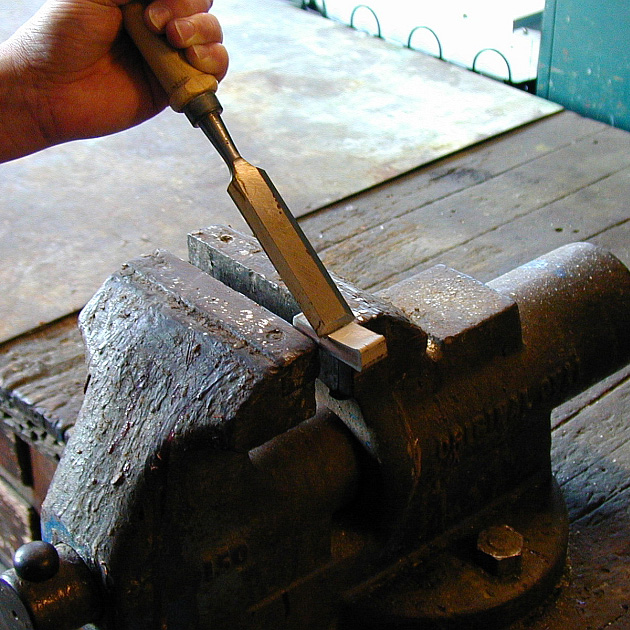Thick Nickel Plating
The maximum thickness of electroless nickel plating is limited to approximately 0.1 mm. Electroplating is the only possibile way to achieve a greater degree of thickness, which we define as "thick nickeling" or "thick nickel plating".
Using pure nickel and its well-bonding and nonporous variations, ELEKTROFORM is able to obtain a thickness of up to 10 mm. This thick nickel plating is a great advantage for overhauling and coating new parts for tool making and engineering. It is also widely used in the steel industry, chemical industry and many other areas (see examples).
Nickel plating is only as good as its bond strength. The precondition for a perfect bond strength onto a metallic surface is a bonding at the atomic level. Our Nickel coatings can only be separated from the basic material through destruction. The bond strength is controlled and tested by ELEKTROFORM using the so-called "chisel resistance" method (see picture below). We have samples available upon request that can be used to demonstrate the atomic bonding.
Metals that can be Coated
The pretreatment of a metallic surface plays an important role in thick nickel plating. We differentiate between the following groups of material:
- Carbon steels, like C10; St 37; St 52; CK 45; 16 Mn Cr 5; 34 Cr 4
- Austenite steels, like X Cr Ni 18 8; X 10 Cr Ni Ti 18 9; X 5 Cr Ni No 18 12
- Ferritic steels, like X 10 Cr 13; X 35 Cr M0 17; X 110 Cr Mo V 15
- Cast iron, annealed cast iron, spheroidal cast iron
- Chromium-nickel alloys, e.g. Inconel, Incoloy, Monel, Nimonic
- High grade nickel and nickel alloys like nickel-cobalt, nickel-copper, etc.
- Aluminium (note content of copper or silicon), also cast- or forging alloys
- Copper: pure copper or copper alloys like Cu-Ag, Cu-Cr-Zr, Cu-Be or else
- Other "special" materials like Ag, Au, Nb, Mo etc. are also coatable

